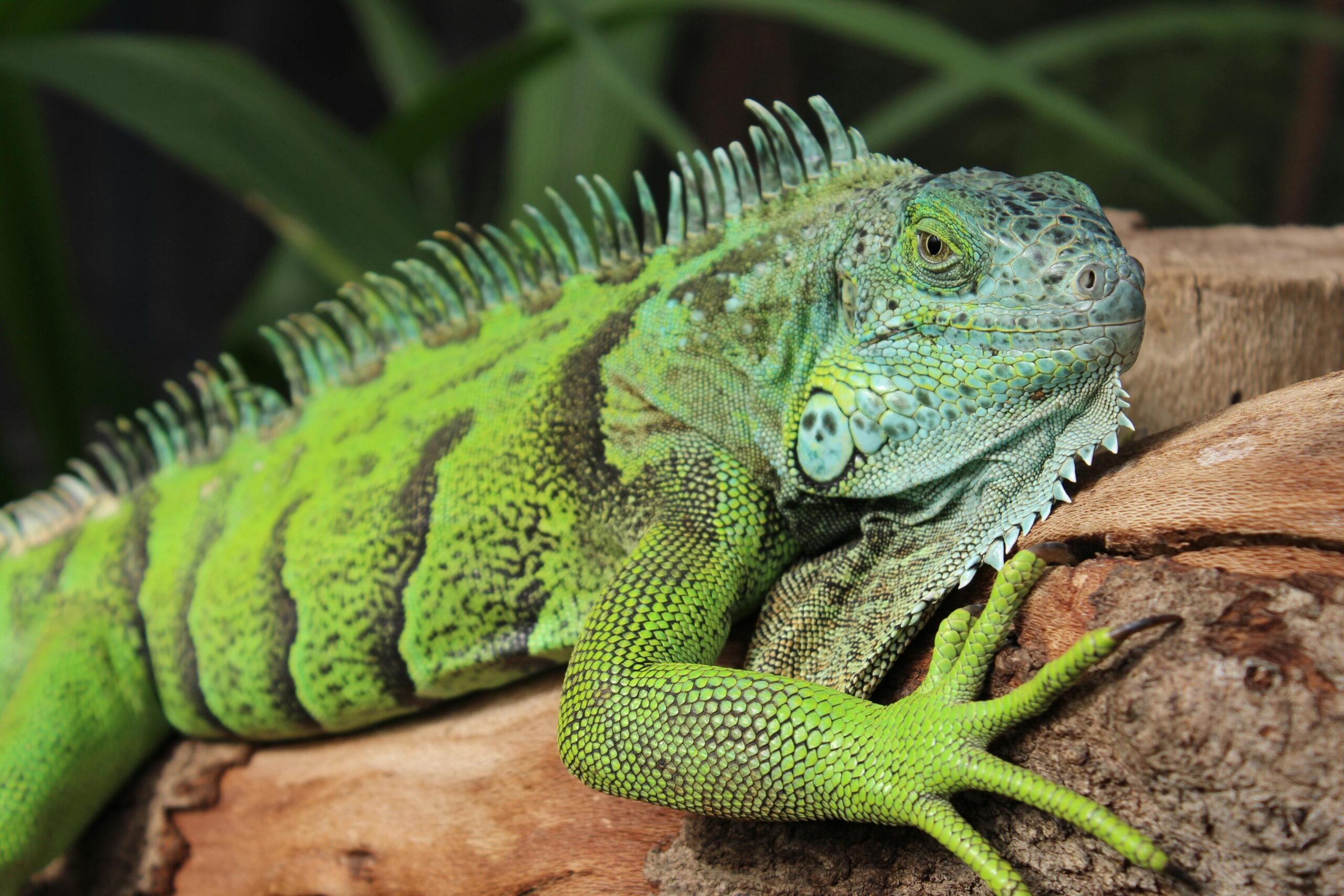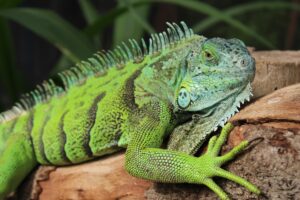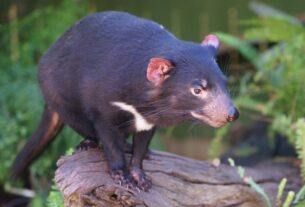The iguana, with its prehistoric appearance and diverse adaptations, is one of the most intriguing reptiles in the animal kingdom. From the lush rainforests of Central America to the arid deserts of Mexico, these remarkable lizards exhibit a wide range of behaviors and characteristics that captivate scientists and nature enthusiasts alike. Known for their striking physical features, unique social behaviors, and specialized diets, iguanas are more than just a visual spectacle; they play crucial roles in their ecosystems and face a variety of conservation challenges.
In this comprehensive overview, we will explore the fascinating world of iguanas, delving into their physical characteristics, behaviors, and habitats. We’ll uncover the complexities of their reproductive strategies and lifespan, examine the conservation status of various species, and highlight the efforts being made to protect these incredible reptiles. Whether you’re a seasoned herpetologist or simply curious about these ancient creatures, this article offers a detailed look into the lives of iguanas and the vital importance of their conservation. Join us as we embark on a journey to discover the captivating realm of iguanas, their natural history, and the pressing need to safeguard their future.
(pexels.com)
Taxonomy and Species
Iguanas are part of the diverse family Iguanidae, which includes a variety of genera and species distributed across the Americas. This family is renowned for its extensive range of adaptations, sizes, and ecological roles. The following overview provides insight into some of the most prominent genera within the Iguanidae family, showcasing their diversity and significance.
(Genus Iguana)
The genus Iguana is one of the most well-known and comprises some of the most iconic iguana species. The Green Iguana (Iguana iguana) is particularly notable within this genus and is frequently encountered in captivity. Native to the tropical rainforests of Central and South America, the Green Iguana can reach impressive lengths of up to 6 feet (1.8 meters) from head to tail. Its vibrant green coloration, which fades to more subdued hues as the iguana matures, helps it blend into the dense foliage of its rainforest habitat. The Green Iguana plays a crucial role in its ecosystem by dispersing seeds and contributing to plant regeneration through its herbivorous diet, which consists of leaves, flowers, and fruits.
In contrast, the Lesser Antillean Iguana (Iguana delicatissima) is a smaller and more delicate species found exclusively on the Lesser Antilles islands. This species has adapted to the specific conditions of these islands, but it faces significant conservation challenges. Habitat loss due to human activities and hybridization with the Green Iguana have led to a dramatic decline in its population. Conservation efforts are focused on protecting the Lesser Antillean Iguana’s remaining habitats and addressing the impacts of hybridization to ensure the survival of this unique species.
(Genus Ctenosaura)
The genus Ctenosaura includes iguanas that are adapted to rocky, arid environments, characterized by their distinctive spiny tails. These species are predominantly found in Central America and the Mexican deserts, where they exhibit specialized adaptations to cope with the harsh conditions. For example, the Black Spiny-tailed Iguana (Ctenosaura pectinata) is well-suited to life in rocky terrains. Its spiny tail provides both protection and enhanced climbing abilities, allowing it to navigate rocky outcrops and escape from predators. This adaptation is crucial for survival in environments with limited shelter and extreme temperatures.
Members of the Ctenosaura genus demonstrate remarkable resilience to environmental challenges. Their ability to thrive in arid and semi-arid regions highlights their evolutionary adaptations, including behaviors and physiological traits that help them conserve water and regulate body temperature. Research into Ctenosaura species offers valuable insights into how iguanas have evolved to handle extreme conditions and the ecological roles they play in their respective habitats.
(Genus Cyclura)
The genus Cyclura is distinguished by its West Indian iguanas, which are native to specific Caribbean islands and face severe conservation challenges. The Grand Cayman Blue Iguana (Cyclura lewisi) is one of the most critically endangered iguana species globally. With a population confined to Grand Cayman Island, this species is known for its striking blue coloration, particularly prominent in males. Conservation initiatives for the Grand Cayman Blue Iguana include habitat restoration projects and comprehensive captive breeding programs designed to bolster its population. These efforts are crucial for recovering the species and ensuring its long-term survival.
Another prominent species within this genus is the Rhinoceros Iguana (Cyclura cornuta), found on several Caribbean islands, including Hispaniola. This iguana is named for the distinctive horn-like structures on its snout, which are used in social interactions and combat. The Rhinoceros Iguana faces threats from habitat destruction and the illegal pet trade, necessitating targeted conservation strategies to address these issues. Similarly, the Cuban Iguana (Cyclura nubila) is known for its considerable size and strength and plays a vital role in maintaining the ecological balance of its Cuban habitat. Protecting these species involves safeguarding their habitats, combating illegal trade, and supporting conservation programs that enhance their chances of survival.
Physical Characteristics
Iguanas are renowned for their distinctive and striking physical features, which make them easily recognizable among reptiles. These characteristics vary significantly among species, contributing to their unique appearances and adaptations. Here’s a closer look at some of the key physical traits of iguanas.
(Body Size)
Iguanas display a remarkable range in size, which reflects their diverse adaptations to various environments. For instance, smaller species such as the Lesser Antillean Iguana (Iguana delicatissima) typically grow to about 2 feet (60 cm) in length, including their tail. This smaller size suits their more restricted island habitats and often results in a more delicate build compared to larger species. On the other hand, species like the Green Iguana (Iguana iguana) can reach lengths of over 6 feet (1.8 meters) from head to tail, making them one of the largest iguanas. This considerable size variation allows iguanas to adapt to different ecological niches, with larger species often occupying more extensive territories and having different dietary and habitat needs.
The significant size difference between species is also linked to their ecological roles. Larger iguanas like the Green Iguana are often herbivorous and contribute to their ecosystems through seed dispersal, while smaller species may have different feeding strategies and habitat requirements. The size of an iguana influences its role in the ecosystem and its interactions with other species, making it an important factor in their overall biology and behavior.
(Coloration)
Coloration is a prominent feature of iguanas and varies widely across species and life stages. For example, young Green Iguanas typically exhibit bright green hues that help them blend into the vibrant foliage of their tropical rainforest habitats. This bright coloration serves as camouflage, protecting them from predators in their natural environment. As iguanas mature, their coloration often becomes more subdued, transitioning to shades of brown and gray. This change can be attributed to a combination of factors including age, environmental conditions, and changes in diet.
Some iguana species display striking and vibrant colors, which play important roles beyond mere camouflage. The Blue Iguana (Cyclura lewisi), for instance, is known for its vivid blue coloration, especially in males. This coloration is not only visually stunning but also serves as a means of communication during mating displays and social interactions. Bright colors can signal health and genetic fitness to potential mates and can also be used to establish dominance within a group. The diverse coloration among iguana species reflects their adaptations to their specific environments and social structures.
(Distinctive Features)
Iguanas possess several distinctive physical features that set them apart from other reptiles. One of the most notable is the dewlap, a flap of skin located under the throat. The dewlap can be extended and is used in various social interactions, including displays of dominance, territorial marking, and courtship rituals. This feature is crucial for communication among iguanas, helping them convey messages and establish social hierarchies within their populations.
In addition to the dewlap, iguanas have a spiny crest that runs along their backs. This crest provides both protection and a visual signal to other iguanas. The spines can deter potential predators and rival iguanas, making them a key defense mechanism. Furthermore, iguanas have long, muscular tails that serve multiple functions, including balance, locomotion, and defense. In some species, the tail is prehensile, aiding in climbing, grasping objects, and maintaining stability in their arboreal or rocky habitats. These distinctive features highlight the evolutionary adaptations of iguanas, enabling them to thrive in a variety of environments and fulfill their ecological roles.
Habitat and Distribution
Iguanas are native to a diverse range of environments across the Americas, with each species adapted to its specific habitat. Their distribution highlights their ecological versatility and the unique challenges they face in different regions. Here’s a closer look at the varied habitats of iguanas and how they have adapted to their environments.
(Rainforests and Tropical Regions)
Many iguana species thrive in the lush, humid environments of tropical rainforests. The Green Iguana (Iguana iguana) is a prominent example, commonly found in the rainforests of Central and South America. These rainforests provide the abundant vegetation and water resources essential for iguanas, as they primarily feed on leaves, fruits, and flowers. In these dense habitats, iguanas can often be seen basking in the sun on branches, climbing trees to reach their food, and swimming in rivers and streams to cool off and hydrate. The complex structure of the rainforest offers both ample food sources and protection from predators, making it an ideal environment for these reptiles.
The tropical rainforest habitat is not only crucial for the survival of species like the Green Iguana but also influences their behavior and ecology. The dense canopy provides cover from predators and harsh weather, while the rich biodiversity supports the iguanas’ varied diet. Additionally, the tropical rainforest environment plays a role in their reproductive behaviors and social interactions, with the abundance of resources supporting higher population densities and more complex social structures.
(Dry and Arid Regions)
Some iguana species have adapted to more arid and semi-arid environments, showcasing their remarkable versatility. The Spiny-tailed Iguanas (Ctenosaura spp.) are well-suited to the dry, rocky terrains of Central America and northern Mexico. These iguanas have evolved to handle extreme temperatures and scarce water sources, which are characteristic of their arid habitats. They often take refuge in rocky crevices and burrows, which provide shelter and help them regulate their body temperature. This adaptation is crucial for their survival in environments where extreme heat and limited water availability are common.
The ability of Spiny-tailed Iguanas to thrive in harsh conditions is a testament to their evolutionary adaptations. Their diet is typically adapted to include a variety of plant materials that can withstand dry conditions, and their behavioral patterns are geared towards conserving water and avoiding the hottest parts of the day. These adaptations highlight the resilience and versatility of iguanas as they inhabit some of the most challenging environments.
(Island Ecosystems)
Several iguana species are endemic to specific islands in the Caribbean, reflecting their specialized adaptations to island life. The genus Cyclura includes several notable species, such as the Grand Cayman Blue Iguana (Cyclura lewisi) and the Rhinoceros Iguana (Cyclura cornuta), which are native to various Caribbean islands. These species have evolved unique traits suited to their island environments, where limited resources and isolation influence their behavior and biology. The isolated nature of these islands presents both opportunities and challenges for iguanas, with limited resources and geographic isolation affecting their population dynamics and evolutionary trajectories.
Island ecosystems offer distinct challenges, such as habitat destruction, invasive species, and climate change impacts, which can severely affect the delicate balance of these isolated populations. Conservation efforts are crucial for protecting these species, as their restricted ranges make them particularly vulnerable to environmental changes. Strategies such as habitat preservation, control of invasive species, and climate change mitigation are essential for ensuring the survival of these unique island-dwelling iguanas.
Iguanas’ varied habitats underscore their evolutionary adaptability, allowing them to occupy a range of ecological niches from tropical rainforests to arid deserts and isolated islands. Understanding their distribution and habitat requirements is key to effective conservation strategies and preserving the delicate balance of their ecosystems.
Behavior and Diet
Iguanas exhibit a range of behaviors and dietary habits that reflect their ecological roles and adaptations to their environments. These traits vary significantly among species, highlighting their versatility and specialization in different habitats.
(Diet)
Most iguanas are primarily herbivorous, subsisting on a diet rich in leaves, flowers, fruits, and occasionally seeds. This herbivorous diet is crucial for their health, providing essential nutrients for growth, maintenance, and overall well-being. For example, the Green Iguana (Iguana iguana) consumes a variety of plant materials, including tender leaves, shoots, and fruits. This diet is not only high in vitamins, minerals, and fiber but also supports the iguana’s large size and active lifestyle. The Green Iguana’s diet aids in maintaining its robust health and energy levels, which are vital for its survival in the wild.
In contrast, some iguana species, such as the Spiny-tailed Iguanas (Ctenosaura spp.), exhibit omnivorous tendencies, particularly during their juvenile stages. These iguanas may include insects, small invertebrates, and even small vertebrates in their diet. This dietary flexibility allows them to adapt to environments where plant resources might be less abundant. By consuming a mix of plant and animal matter, these iguanas can meet their nutritional needs more effectively and thrive in a broader range of ecological niches. The inclusion of animal matter in their diet also provides additional protein and nutrients, supporting their growth and development in diverse habitats.
(Social Behavior)
The social behavior of iguanas varies widely among species, reflecting their different ecological and social needs. Many iguanas are solitary and territorial, especially as adults. They often establish and defend territories that offer access to vital resources such as food, basking sites, and shelter. Territorial disputes can involve displays of aggression or visual signals, such as the extension of the dewlap (a flap of skin under the throat) or head-bobbing. These behaviors help maintain social hierarchies and minimize physical confrontations among individuals. Territoriality ensures that each iguana has access to the resources needed for survival, while also reducing competition and potential conflicts.
However, some iguana species exhibit more social behaviors, particularly during specific periods. For example, iguanas may gather in groups during mating seasons or in areas with abundant food resources. During these times, they might form loose aggregations or social groups, although interactions within these groups can still be competitive. Social gatherings can facilitate mating opportunities and increase access to resources, but they also require managing social dynamics and competition among individuals. These social behaviors can influence reproductive success and resource acquisition, demonstrating the adaptability and complexity of iguana social interactions.
(Basking)
As ectothermic (cold-blooded) reptiles, iguanas rely on external heat sources to regulate their body temperature. Basking is a crucial behavior for maintaining their metabolic functions and overall health. Iguanas seek out sunny spots to warm up, especially in the morning or during cooler periods of the day. Basking allows them to achieve the necessary body temperature for digestion, physical activity, and overall physiological functioning. In their natural habitats, basking behaviors are essential for maintaining optimal body temperature, enabling iguanas to be active, forage for food, and interact with other iguanas effectively.
In captivity, replicating natural basking conditions is vital for the well-being of iguanas. Providing appropriate heat sources and UVB lighting ensures that captive iguanas can regulate their body temperature effectively. This setup supports their health and mimics their natural basking behavior, which is crucial for their overall physiological functioning. By understanding and accommodating these needs, caretakers can help ensure that captive iguanas remain healthy and active, similar to their wild counterparts.
These behavioral and dietary traits are integral to iguanas’ survival and adaptation to their diverse habitats. A comprehensive understanding of these aspects of their biology is essential for effective management and conservation of both wild and captive iguana populations. Ensuring that iguanas can thrive in their natural environments or under human care requires attention to their dietary needs, social behaviors, and basking habits.
Reproduction and Lifespan
Iguanas exhibit a range of reproductive strategies and lifespans, which are influenced by their species, environment, and conditions in captivity. These factors play a crucial role in their survival and conservation.
(Reproduction)
Iguanas demonstrate diverse reproductive behaviors and strategies that vary significantly among species. Generally, iguanas reproduce by laying eggs, with the number of eggs per clutch differing widely based on species. For example, the Green Iguana (Iguana iguana) typically lays between 20 to 70 eggs per clutch, reflecting its larger size and greater reproductive capacity. On the other hand, smaller species such as the Lesser Antillean Iguana (Iguana delicatissima) usually lay fewer eggs, often ranging from 10 to 20 per clutch. The choice of nesting site is crucial for the successful development of the eggs; female iguanas carefully select and excavate nests in the ground, aiming for locations with optimal temperature and humidity for incubation.
Once the eggs are laid, the female iguana leaves them to incubate on their own. The incubation period generally spans from 60 to 90 days, influenced by environmental conditions and species-specific needs. Hatchlings emerge fully formed but face immediate challenges as they are vulnerable to predation and environmental threats. They must start fending for themselves right away, making the early stages of life particularly precarious. Protecting nesting sites and ensuring the survival of hatchlings are critical components of iguana conservation efforts.
(Lifespan)
The lifespan of iguanas varies widely depending on their environment and care. In the wild, iguanas can live up to 20 years, although their longevity is affected by factors such as predation, disease, and environmental conditions. These natural threats can significantly impact their overall lifespan and survival rates. In captivity, iguanas often live longer, sometimes reaching up to 30 years or more. This extended lifespan in captivity is largely attributed to the controlled environment, regular veterinary care, balanced diet, and the absence of predators.
Captive iguanas benefit from a stable environment that reduces stress and exposure to environmental hazards, contributing to their increased longevity. However, maintaining their health requires careful management, including monitoring their dietary needs, ensuring appropriate temperature and humidity levels, and addressing their social and behavioral requirements. Effective captive care practices are essential for supporting the well-being and extended lifespan of these reptiles. Understanding the factors influencing their lifespan is vital for both conservation efforts and improving care standards, ensuring that iguanas can thrive both in the wild and under human care.
Conservation Status
Iguanas, despite their diverse and adaptable nature, face a range of conservation challenges that threaten their survival. While some species are relatively abundant and widespread, others are critically endangered due to various human-induced factors.
(Habitat Loss)
Habitat loss is a primary and pressing threat to iguana populations. Human activities such as logging, agricultural expansion, and urban development have led to significant deforestation and habitat destruction, severely impacting many iguana species. For instance, the Green Iguana (Iguana iguana), which depends on tropical rainforests for its food, shelter, and breeding sites, faces increasing pressure due to the widespread destruction of these vital habitats. Similarly, species adapted to arid and semi-arid environments, such as the Spiny-tailed Iguanas (Ctenosaura spp.), are adversely affected by land use changes that reduce the availability of their specialized habitats.
In addition to outright habitat loss, habitat fragmentation poses a severe challenge by isolating iguana populations. This fragmentation can lead to reduced genetic diversity, making isolated populations more vulnerable to environmental changes, disease outbreaks, and genetic issues. Efforts to combat habitat loss often focus on preserving remaining natural areas, restoring degraded habitats, and promoting sustainable land use practices to prevent further degradation. Establishing and maintaining protected areas, enforcing land-use regulations, and encouraging conservation-friendly practices are crucial components of these efforts.
(Illegal Trade)
The illegal pet trade is another significant threat to iguanas, contributing to dramatic declines in their wild populations. Many iguana species are captured and sold as exotic pets, with the trade often targeting young iguanas that are easier to handle and transport. This removal of individuals from the wild disrupts natural populations and can lead to unsustainable extraction rates. Furthermore, the illegal trade introduces additional risks, such as the spread of diseases and parasites to wild populations, which complicates conservation efforts and poses a threat to their health and survival.
Combating the illegal pet trade requires a comprehensive approach involving stricter law enforcement, public education, and international cooperation. Conservation organizations and governments work together to regulate and monitor the trade of iguanas and their parts. Effective measures include implementing and enforcing wildlife protection laws, conducting public awareness campaigns to educate people about the ecological importance of iguanas and the ethical considerations of keeping them as pets, and collaborating with international bodies to address global trafficking issues. Enhancing the legal framework and increasing penalties for illegal trade can also play a significant role in mitigating this threat.
(Conservation Efforts)
In response to the threats posed by habitat loss and illegal trade, numerous conservation programs and initiatives have been established to protect endangered iguana species. Habitat preservation is a key focus of these efforts, with initiatives aimed at safeguarding critical areas from deforestation and degradation. This includes creating and maintaining protected areas, promoting sustainable land use practices, and engaging in habitat restoration projects. For example, the Grand Cayman Blue Iguana (Cyclura lewisi) has benefited from a successful captive breeding program, which has helped increase its population and support reintroduction efforts in its native habitat.
Breeding programs in captivity are essential for the conservation of critically endangered iguana species. These programs not only help to boost population numbers but also provide support for reintroduction into the wild. In addition to breeding programs, conservation organizations actively work to combat illegal trade through law enforcement initiatives and international agreements aimed at regulating and monitoring the trade of iguanas and their parts. Ongoing research is also crucial for understanding iguanas’ ecological needs, assessing population dynamics, and developing effective conservation strategies.
By addressing the multifaceted issues of habitat loss, illegal trade, and supporting targeted conservation programs, it is possible to mitigate the threats faced by iguanas and ensure the survival of these remarkable reptiles for future generations. Continued efforts in research, habitat protection, and legal enforcement are vital for the long-term conservation of iguana species and the preservation of their natural habitats.
Conclusion,
Iguanas are truly remarkable creatures, embodying a blend of ancient evolutionary traits and impressive adaptability. Their striking physical characteristics, diverse behaviors, and varied diets illustrate their ability to thrive in a range of environments, from lush rainforests to arid deserts and isolated islands. As we’ve explored, iguanas are not only fascinating subjects of study but also play crucial roles in their ecosystems, from seed dispersal to maintaining ecological balance.
However, despite their adaptability, many iguana species face significant threats from habitat loss, illegal trade, and environmental changes. Conservation efforts are essential to addressing these challenges and ensuring that future generations can continue to marvel at these extraordinary reptiles. By supporting habitat preservation, combating illegal trade, and participating in breeding programs, we can contribute to the protection and recovery of endangered iguana species.
Understanding and appreciating the complexity of iguanas enhances our commitment to their conservation. It reminds us of the delicate balance of nature and the impact human activities can have on even the most resilient of species. As we continue to learn more about these captivating lizards, it becomes increasingly clear that safeguarding their future is not just about preserving a species, but about maintaining the health and diversity of our planet’s ecosystems.




